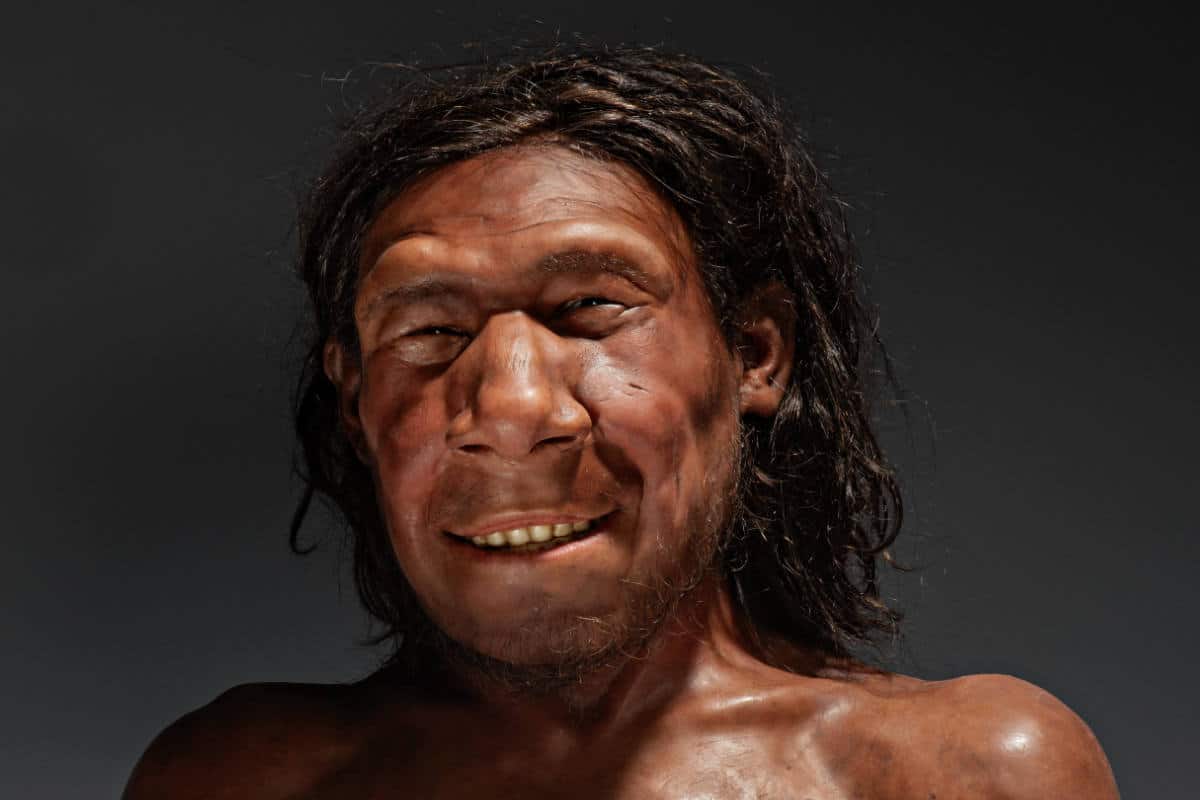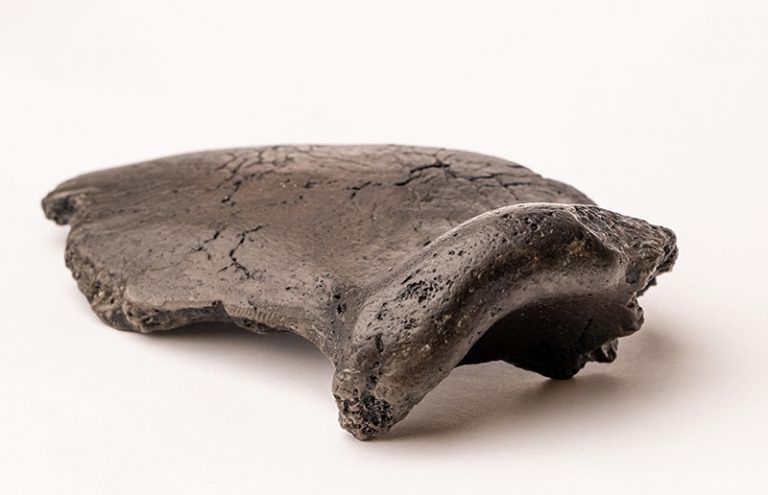
He was a fairly stout young man with a noticeable bump above his right eye.
Years ago, amateur paleontologist Luc Anthonis came across a special fossil. The fossil had been sucked up from the North Sea bed by a shell suction dredger off the coast of Zeeland. After a thorough analysis, it turns out to be the remains of ‘the first Neanderthal in the Netherlands’. And now researchers are giving this prehistoric man a face.
Krijn
The fossil found is a skull fragment of the Neanderthal. More specifically, it turns out to be a fossil eyebrow arch that is about 70,000 – 50,000 years old. Researchers from Leiden University and the Max Planck Institute in Leipzig were then able to decipher that the skull piece belonged to a rather stout, young man. They nicknamed the young Neanderthal “Krijn.”

Krijn’s fossil eyebrow arch Image: Servaas Neijens
Thanks to follow-up studies, we now know quite a bit about Krijn. For example, there was mainly meat on his menu. He was also one of the inhabitants of Doggerland; the drowned prehistoric landscape off our coast. 50,000 years ago, the sea level was about 50 meters lower than it is today. Mammoths, woolly rhinoceroses, reindeer, horses and also Neanderthals roamed the cold but nutrient-rich steppe.
Tumor
But one of the most special things about Krijn is perhaps a striking small hollow behind his Neanderthal’s trademark large eyebrow arch. This cavity was probably created by a subcutaneous, harmless tumor – something that has never been seen in Neanderthals before.
Sight
While we have a pretty good idea of what Neanderthals looked like physically, researchers also wanted to be able to look Krijn straight in the eye. And it worked. For example, paleo-anthropological artists of Knowledge & Knowledge Reconstructions succeeded in making a reconstruction of Krijn’s appearance based on the skull fragment found and the known characteristics of other Neanderthals (such as their eye, hair and skin color). Knowledge & Knowledge made many other reconstructions of Neanderthals and other prehistoric hominids, including the glacial mummy Ötzi. And now the first Neanderthal in the Netherlands has also been given a face.

The reconstructed face of Neanderthal Krijn. Image: Servaas Neijens
Do you also want to come face to face with Krijn? The fossil and the reconstruction are together in the exhibition about ‘Doggerland. Lost world in the North Sea’. This exhibition can be seen between 7 September and 31 October in the National Museum of Antiquities.
Source material:
“First Dutch Neanderthal gets a face” – Royal Museum of Antiquities
Image at the top of this article: RMO